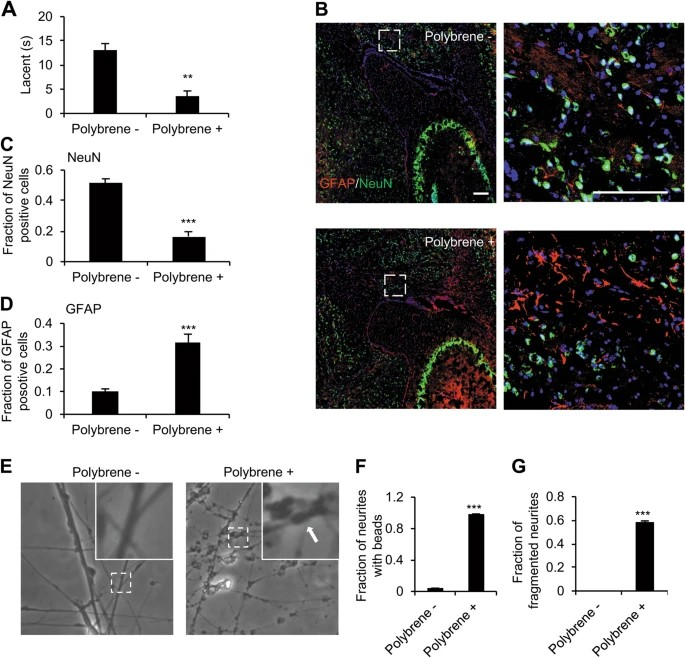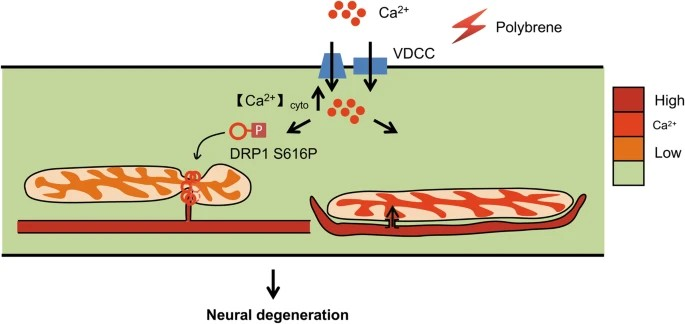Polybrene
In the realm of molecular biology and genetic engineering, the delivery of genetic material into cells is a fundamental step that enables researchers to study gene function, protein expression, and even the potential treatment of genetic diseases. One of the critical agents used in facilitating this process is Polybrene, a chemical compound that significantly enhances the efficiency of viral transduction methods. This article delves into the nature of Polybrene, its applications, and the considerations necessary when using it in laboratory settings.

Polybrene, chemically known as hexadimethrine bromide, is a cationic polymer used to increase the efficiency of the transduction process in cell cultures. Transduction is a method of introducing genetic material into cells using viruses as vectors. The positive charge of Polybrene helps neutralize the repulsion between the negatively charged viral particles and the cell membranes, facilitating the entry of the virus into the cell.
Molecular Formula : (C13H30N2Br2)n
Polybrene is a lyophilized solid and can be prepared as a stock solution by adding 1 mL of sterile ultra-pure water directly to the vial (final stock concentration 10 mg/mL). Polybrene is a powerful tool in cell biology and genetic engineering, its use comes with certain considerations. The concentration of polybrene and the duration of exposure must be carefully optimized for different cell types to avoid toxicity. High concentrations or prolonged exposure can lead to cell damage or death, potentially skewing experimental results. Moreover, researchers must also considers the type of viral vector being used, as some vectors may be more compatible with polybrene than others. The choice of vectors and the use of polybrene should be based on the specific requirements of the experiment and the characteristics of the target cells.
Due to their ability to trigger strong immune responses, adenovirus (HAdVs) in general and the serotype5 (HAdV-5) in particular are amongst the most popular viral vectors in research and clinical application. However, efficient transduction using HAdV-5 is predominately achieved in coxsackie and adenovirus receptor (CAR)-positive cells.
Polybrene induces degeneration of neurons in vivo and in vitro To investigate possible effects of polybrene on neurons in vivo, polybrene (4 μg/μL) or saline was intracerebroventricularly (ICV) injected to mouse brains as previously described36. Surprisingly, mice treated with polybrene showed disability in movement at day 3 after polybrene injection in comparison to mice treated with saline as assayed by the Rotating Rod test. We next performed immunostaining with antibodies specific to neuronal nuclei (NeuN), a neural marker, and glial fibrillary acidic protein (GFAP), a marker of reactive astrocytosis. Robust reduction of NeuN staining and enhancement of GFAP was observed, indicating polybrene induces neural death and gliosis (Fig. 1b–d). As increased GFAP expression in hypertrophic astrocytes often accompanies neural degeneration, these results imply polybrene induces neural degeneration in vivo.

Figure 1: Neuritic degeneration after polybrene treatment in vivo and in vitro
A Performance on the accelerating rotating rod apparatus showed that the mice with polybrene injection had significantly shorter step length and less performance on the rotating rod (n = 4, **P< 0.01). b–d Altered NeuN and GFAP immunostaining after ICV injection with polybrene. B NeuN and GFAP immunofluorescent staining in sagittal sections from 3-month mouse brain 3 days after ICV injection of polybrene or saline. The regions enclosed by the white dotted rectangles are displayed at higher magnification at right. Quantification is shown in c and d. Scale bar: 100 μm (n = 4, ***P < 0.001). e–g Fraction of neurites with beads and fragmented neurites in neurons treated with polybrene for 24 h. The neurites with beads are indicated by arrow. Scale bar: 25 μm (n = 4, ***P < 0.001).In response to polybrene a rapid extracellular calcium influx occurs, which initiates two independent mechanisms involved in neural degeneration: DRP-1 dependent mitochondrial fragmentation and ER-mitochondria interface remodeling.

Figure 2: Model of neuritic degeneration induced by polybrene.
Polybrene Increases the efficiency of retrovirus-mediated gene transfer, however, the mechanism of their enhancement of transduction has remained unclear. As retrovirus transduction is fundamentally limited by the slow diffusion of virus to the target cell surface, we investigated the ability of polybrene to modulate this initial transport step. We compared the ability of both envelope (gp70) and capsid (p30) protein based assays to quantitate virus adsorption and found that p30 based assays were more reliable due to their ability to distinguish virus binding from free gp70 binding. Using the p30 based assay, we established that polybrene concentrations, which yielded 10-fold increases in transduction also, yielded a significant increase in virus adsorption rates on murine fibroblasts. Surprisingly, this enhancement, and adsorption in general, were receptor and envelope independent, as adsorption occurred equivalently on receptor positive and negative Chinese hamster ovary cells, as well as with envelope positive and negative virus particles. These findings suggest that the currently accepted physical model for early steps in retrovirus transduction may need to be reformulated to accommodate an initial adsorption step whose driving force does not include the retrovirus
Polybrene stands out as a critical agent in the toolkit of molecular biologists and genetic engineers. Its ability to enhance the efficiency of transduction has made it indispensable in gene delivery and cell biology research. However, its use requires careful consideration of concentration, exposure time, and compatibility with chosen viral vector to ensure the success of transduction process while minimizing potential cytotoxic effects. As research in gene therapy and cell biology continues to advance, the role of polybrene in these fields is likely to grow further highlighting its importance in scientific community.
Excessive exposure to polybrene (>24 hr) could be toxic to cells. Some cells, such as primary neurons, are sensitive the polybrene. Do not add polybrene to these types of cells. So not recommended for human use .
Polybrene stands out as a critical agent in the toolkit of molecular biologists and genetic engineers. Its ability to enhance the efficiency of transduction has made it indispensable in gene delivery and cell biology research. However, its use requires careful consideration of concentration, exposure time, and compatibility with chosen viral vector to ensure the success of transduction process while minimizing potential cytotoxic effects. As research in gene therapy and cell biology continues to advance, the role of polybrene in these fields is likely to grow further highlighting its importance in scientific community.














Comments